Nestled amidst the rugged peaks of the Caucasus Mountains, the Caucasian Shepherd Dog stands as a formidable guardian, its presence akin to a silent sentinel watching over its domain. But beyond its imposing stature lies a breed that is as loyal as it is protective, with a rich history and a range of characteristics that make it a fascinating subject of discussion.
From its origins in the remote regions between Europe and Asia to its distinctive appearance and working abilities, there is much to uncover about this enigmatic canine.
So, let us embark on a journey of discovery, as we unravel the mysteries and unveil the hidden depths of the Caucasian Shepherd Dog.
Key Takeaways
- Caucasian Shepherd Dogs are a large working breed known for their natural distrust of strangers and unfamiliar animals, as well as their territorial nature.
- Proper socialization and early training are essential for Caucasian Shepherd Dogs to prevent aggression towards other dogs and to ensure they interact well with children.
- Caucasian Shepherd Dogs have specific health concerns, including hip dysplasia, elbow dysplasia, bloat, obesity, and entropion, which owners should be aware of and monitor.
- When considering apartment living, it is important to prioritize qualities such as being quiet, low-energy, and polite, rather than just focusing on size, as not all large breed dogs are suitable for apartment living.
Origin and Size
The Caucasian Shepherd Dog is a large working breed originating from the Caucasus Mountains, situated between Europe and Asia. This breed is known for its impressive size, with males standing between 27.5-30 inches tall at the shoulder and weighing 110-154 pounds, while females are slightly smaller, standing between 26.5-29 inches tall and weighing 90-110 pounds.
As a working breed, the Caucasian Shepherd Dog is known for its strength and endurance, making it well-suited for tasks such as guarding livestock and protecting property. The breed’s size and protective nature make it an imposing presence, capable of deterring potential threats.
Its origins in the rugged Caucasus Mountains have contributed to its ability to thrive in harsh environments and withstand extreme weather conditions.
Breed Group and Lifespan
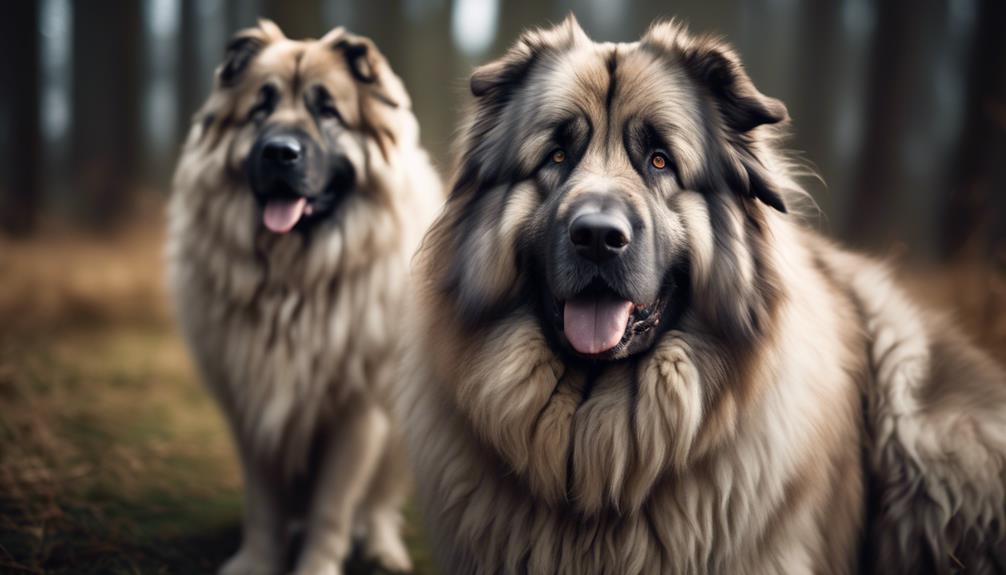
Originating from the rugged Caucasus Mountains, the Caucasian Shepherd Dog belongs to the working breed group and has an average lifespan of 10-12 years. As a member of the working breed group, this dog is known for its strong work ethic, intelligence, and physical endurance. It was originally bred to guard livestock and protect them from predators.
The breed’s lifespan of 10-12 years is within the average range for large breed dogs. However, it’s important to note that individual dogs may vary and factors such as genetics, diet, exercise, and overall health care can influence their lifespan. Providing proper care, regular veterinary check-ups, and a balanced diet can help promote a longer and healthier life for the Caucasian Shepherd Dog.
Coat and Personality
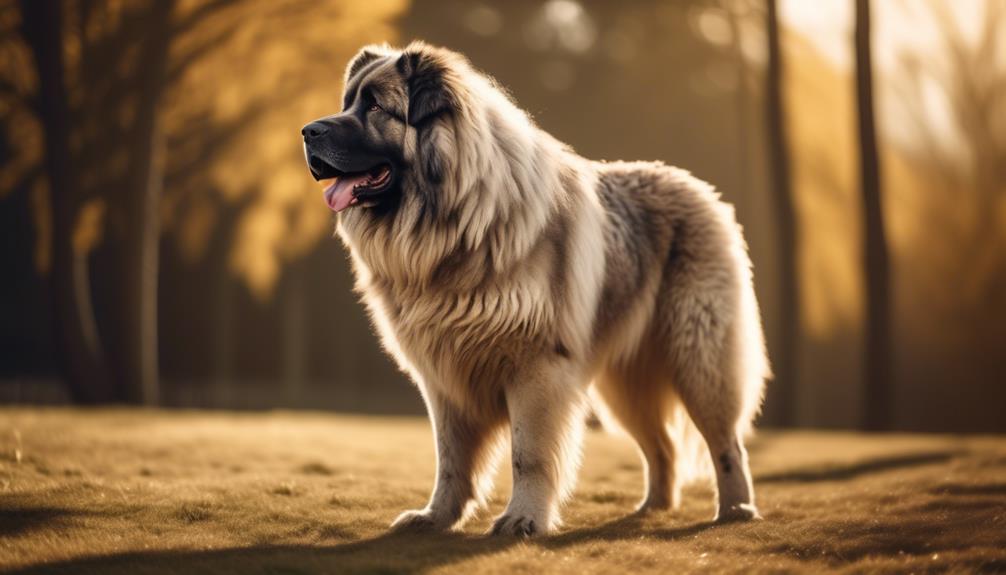
The Caucasian Shepherd Dog’s coat and personality are distinctive features of this breed. Here are some key facts about their coat:
- Coat:
- The Caucasian Shepherd Dog has a long, thick, double coat.
- The coat can be straight or curly.
- It provides excellent protection against harsh weather conditions.
- Regular brushing is necessary to maintain the coat’s health and prevent matting.
And here are some key facts about their personality:
- Personality:
- The Caucasian Shepherd Dog is naturally distrustful of strangers and unfamiliar animals.
- They have a low energy level and are laid back.
- They are highly territorial and protective of their family and property.
- Training can be challenging due to their stubborn nature, but early socialization is crucial to prevent aggression.
Health and Care
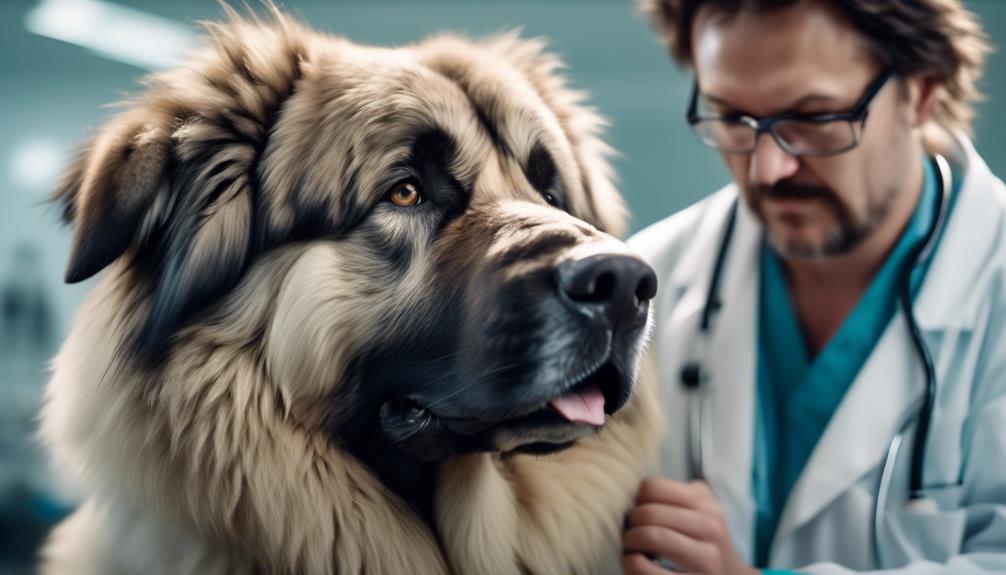
Moving on to the topic of health and care, it’s important to understand the specific needs and considerations for the Caucasian Shepherd Dog breed.
Like any other breed, the Caucasian Shepherd Dog is prone to certain health issues that potential owners should be aware of. Common health problems include hip dysplasia, elbow dysplasia, bloat, obesity, and entropion.
Regular exercise and a balanced diet are essential for maintaining the dog’s overall health and weight control. In addition, proper dental care, regular ear cleaning, nail trimming, and drool wiping should be part of the routine care.
It’s recommended to consult with a veterinarian or nutritionist to determine the appropriate diet for this giant breed with low energy levels.
Feeding and Grooming
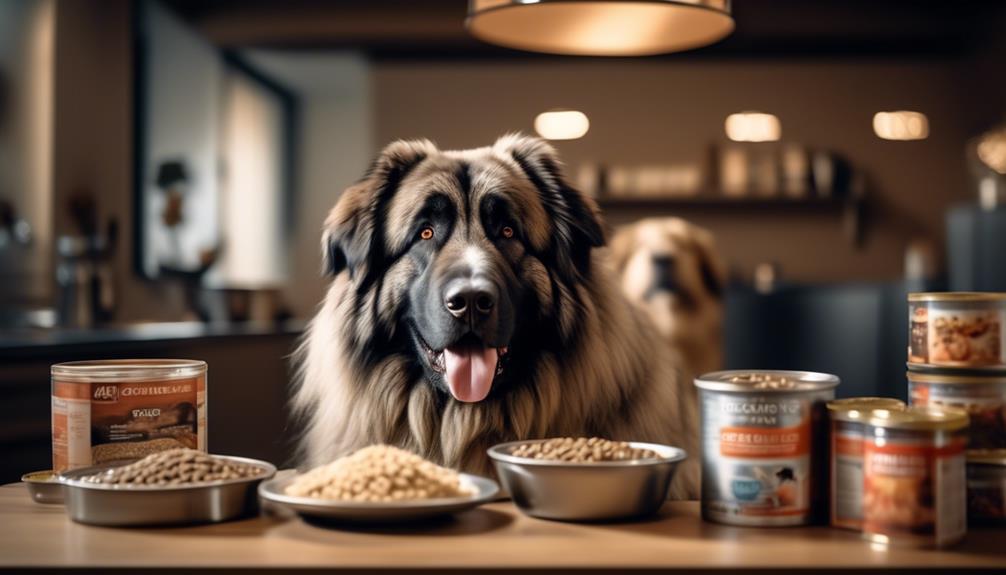
Feeding and grooming the Caucasian Shepherd Dog requires careful attention to ensure their nutritional needs are met and their coat remains healthy and well-maintained. Here are some important considerations:
- Diet: The Caucasian Shepherd Dog is a giant breed with low energy levels. It’s essential to feed them a diet formulated for their specific needs. Consult a veterinarian or nutritionist to determine the right food and portion size.
- Nutritional Requirements: These dogs require a balanced diet that includes high-quality protein, healthy fats, and carbohydrates. Adequate vitamins and minerals are also necessary for their overall health.
- Coat Care: The Caucasian Shepherd Dog has a long, thick, double coat. Regular brushing is crucial to prevent matting and remove loose hair. They undergo heavy shedding once a year, during which more frequent brushing is needed.
- Bathing: These dogs don’t require frequent bathing, as it can strip their coat of natural oils. However, when necessary, use a mild dog shampoo and ensure thorough drying to avoid skin issues.
Children and Other Pets
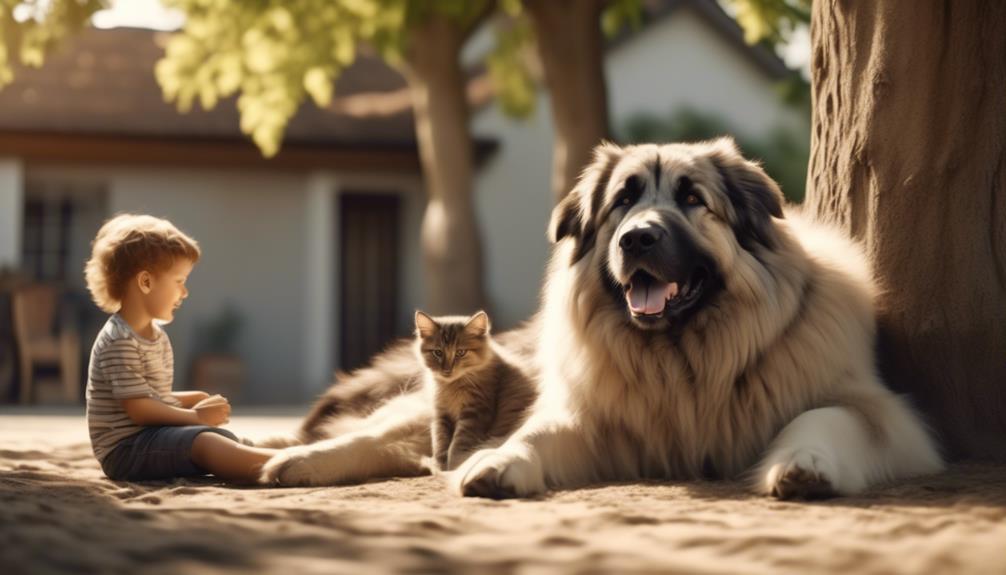
When considering the suitability of Caucasian Shepherd Dogs for families, it’s important to understand their behavior towards children and other pets.
Caucasian Shepherds have a naturally cautious and protective nature, which can make them excellent guardians for children. However, their size and strong-willed nature require careful supervision and early socialization to ensure appropriate behavior.
These dogs have a tendency to be territorial and may display aggression towards other dogs if not properly socialized. Therefore, introducing them to other pets should be done gradually and under controlled circumstances.
It’s crucial to provide consistent training and positive reinforcement to establish boundaries and promote peaceful interactions.
Apartment Living and Dog Suitability
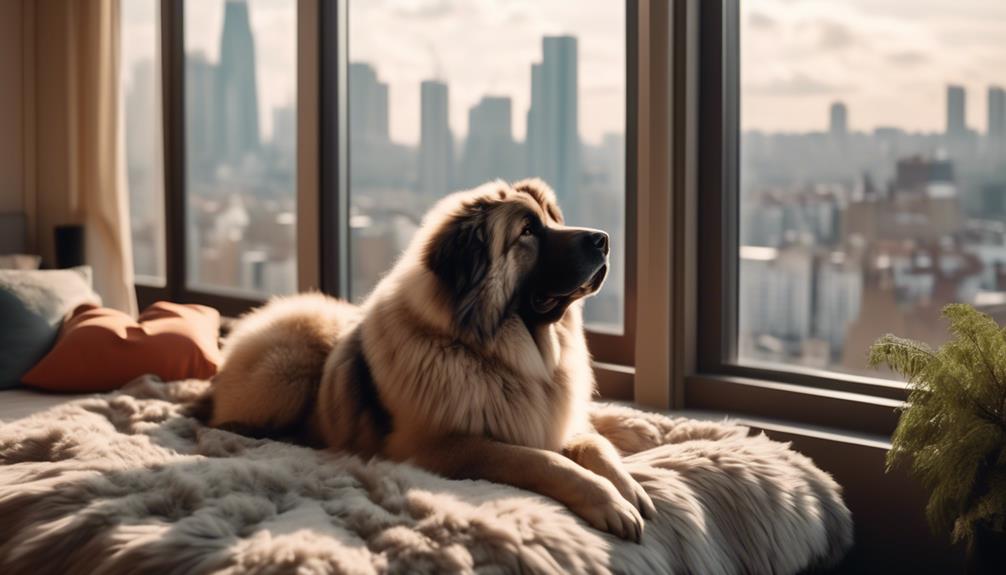
Apartment living can present unique challenges for dog owners, requiring careful consideration of a dog’s behavior and suitability for this type of environment. When choosing a dog for apartment living, it’s important to prioritize certain qualities to ensure a harmonious living situation.
Here are four factors to consider:
- Size isn’t the only factor: While smaller breeds may seem like an obvious choice for apartment living, it’s important to look beyond size. Dogs that are quiet, low-energy, and calm indoors are often better suited for apartment living regardless of their size.
- Consider the comfort of neighbors: Dogs that exhibit good manners and are polite towards neighbors and other residents will help maintain a peaceful living environment. Avoid dogs that have a tendency to bark excessively or become easily agitated.
- Manageability for first-time dog owners: Some dogs are easier to manage than others, especially for first-time dog owners. Dogs that are highly sensitive or assertive may require more experienced owners. Additionally, anxious dogs may struggle with being alone for long periods, so consider a dog that can tolerate being alone.
- Cold weather suitability: Dogs with short coats and little body fat aren’t well suited for cold weather, making them less ideal for apartment living in colder climates.
Factors to Consider for Apartment Living
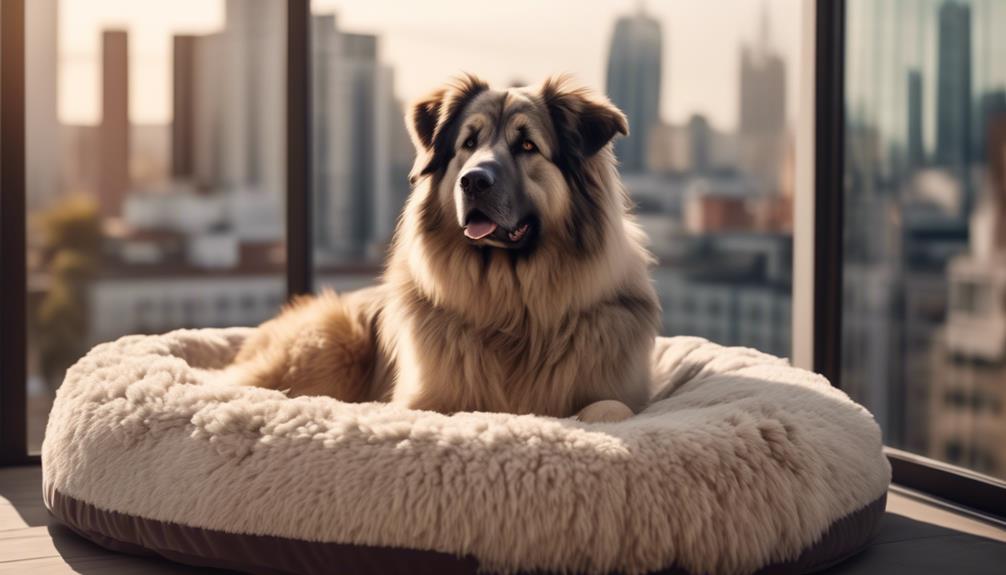
Consideration must be given to various factors when choosing a dog for apartment living in order to ensure a harmonious and suitable environment for both the dog and the owner.
While size is often a consideration, it isn’t the only factor to take into account. Dogs that are quiet, low-energy, calm indoors, and exhibit good manners are more suited to apartment living. It’s important to prioritize these qualities to ensure the comfort of neighbors and other residents.
Additionally, dogs that are highly sensitive or assertive may be more challenging to manage in an apartment setting. Anxious dogs may also struggle with being alone for extended periods of time.
Lastly, dogs with short coats and little body fat may not be well-suited for cold weather conditions typically found in apartment living.
Behavioral Traits: Aggression and Fear
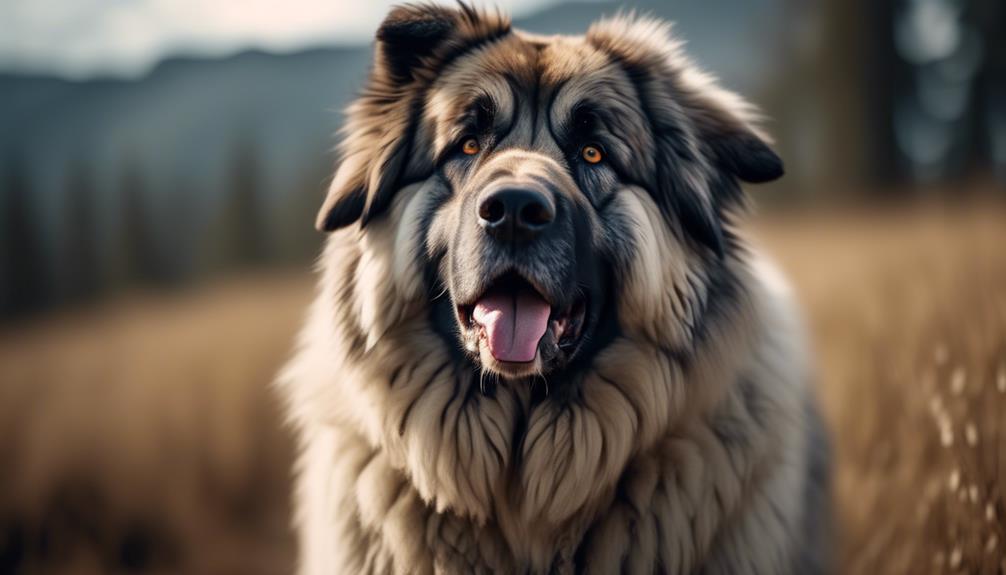
After considering the factors for apartment living, it’s important to address the behavioral traits of aggression and fear in dogs. These traits can greatly impact a dog’s suitability for apartment living and their overall behavior in various situations.
Here are four key points to understand about aggression and fear in dogs:
- Aggression often stems from fear and anxiety: Aggressive behavior in dogs is often a result of fear and anxiety. Understanding the underlying causes of aggression can help in managing and addressing the behavior effectively.
- Fear-based aggression in dogs with low prey drive: Some dogs may display aggression as a response to fear, even if they’ve a low prey drive. It’s crucial to provide proper socialization and training to help them overcome their fears.
- Aggression can lead to injuries: Dogs with aggressive tendencies may pose a risk to themselves and others. In situations where they encounter snakes or wild animals, their aggression can lead to injuries. It’s important to manage and address aggression through appropriate training methods.
- Tendency to bark or howl: Some dog breeds have a higher tendency to bark or howl, which can be disruptive in an apartment setting. Considering a breed’s vocalization frequency can help choose a dog that’s more suitable for apartment living.
Understanding and addressing aggression and fear in dogs is essential for ensuring their well-being and creating a harmonious living environment, especially in apartment settings.
Tendency to Bark or Howl
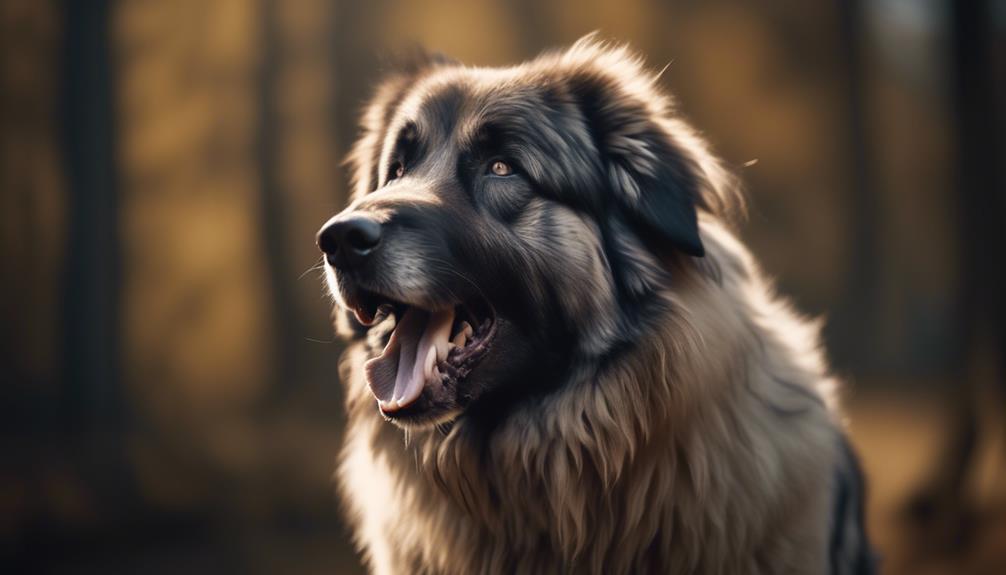
Barking or howling tendencies in dogs can vary among breeds and should be considered when choosing a dog for apartment living.
The Caucasian Shepherd Dog, known for its protective and territorial nature, has a moderate tendency to bark. This breed is naturally distrustful of strangers and unfamiliar animals, which can trigger their vocalization. While their barking can be useful in alerting their owners to potential threats, it may not make them the best choice for apartment living, especially in buildings with noise restrictions.
Proper training and socialization can help manage their barking tendencies, but potential owners should be prepared to address this behavior. It’s important to assess the specific needs and living conditions of a dog breed before making a decision on apartment suitability.
Wanderlust Potential and Exercise Needs
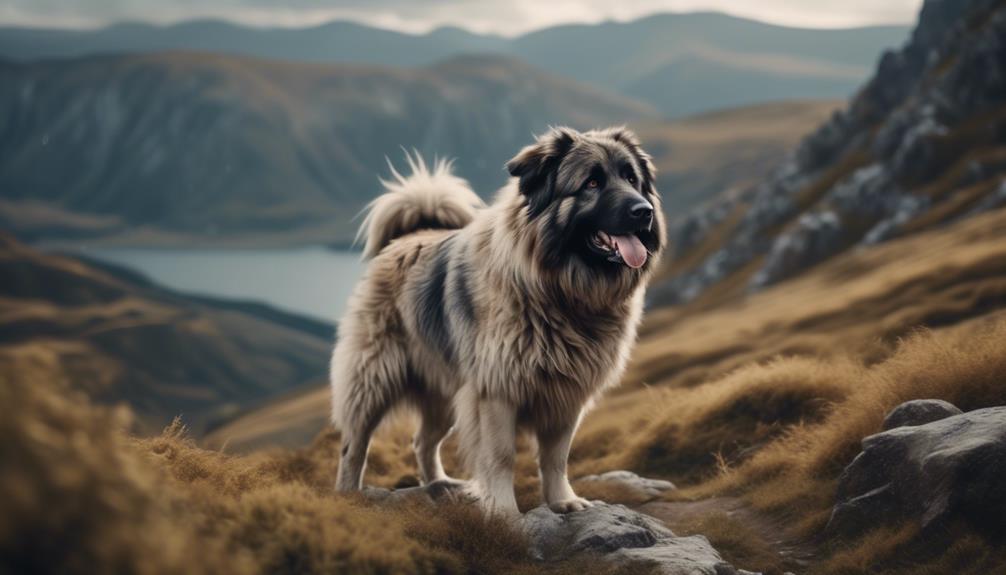
The next aspect to examine is the wanderlust potential and exercise needs of the Caucasian Shepherd Dog, building upon the previous discussion of their barking tendencies in apartment living. Here are some key points to consider:
- Moderate wanderlust potential: While not as prone to wandering as Nordic dogs or hounds, Caucasian Shepherds still have a moderate tendency to wander. It’s important to provide a secure and well-fenced yard to prevent them from roaming.
- High exercise needs: Despite their low-energy demeanor indoors, Caucasian Shepherds require significant exercise to maintain their physical and mental well-being. Daily walks, playtime, and mental stimulation activities are essential to keep them happy and prevent boredom-related behaviors.
- Vigorous intensity: These dogs exhibit high levels of energy and enthusiasm during exercise sessions. They enjoy activities that challenge them physically and mentally, such as obedience training, agility, and interactive games.
- Not suitable for apartment living: Due to their exercise needs and potential wanderlust, Caucasian Shepherds are generally not recommended for apartment living. They thrive in spacious environments with access to a secure outdoor area where they can freely roam and burn off their energy.
Intensity and Playfulness
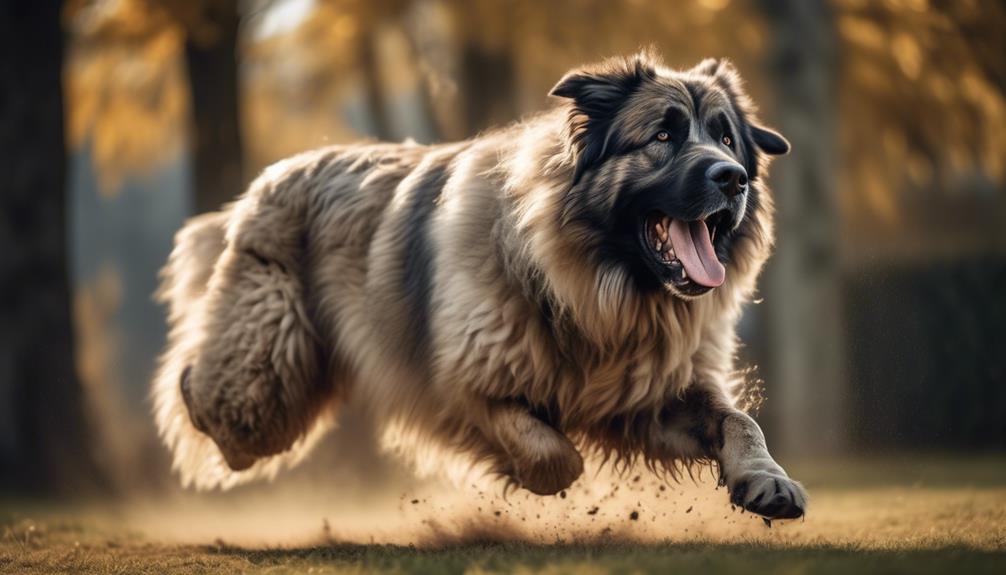
Intensity and playfulness are important factors to consider when assessing the compatibility of the Caucasian Shepherd Dog with children or elderly individuals.
This breed is known for its intense nature, which can be seen in its high energy levels and enthusiasm. The Caucasian Shepherd Dog exhibits a vigorous approach to play, often displaying great enthusiasm and excitement during playtime.
However, it’s essential to note that the intensity level of this breed may not be suitable for all individuals, especially those who may have limited mobility or prefer a more subdued and calm companion.
Proper supervision and training are crucial to ensure that the playfulness of the Caucasian Shepherd Dog is appropriate and safe for everyone involved.
Breeding and Rescue
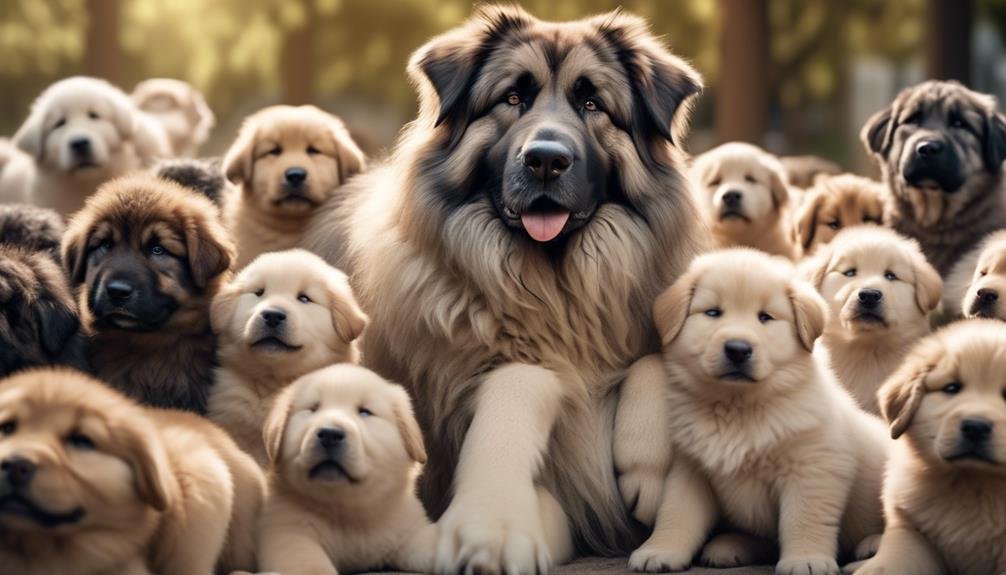
To further explore the breeding and rescue aspects of the Caucasian Shepherd Dog, it’s important to understand the responsible practices of reputable dog breeders and the efforts made by rescue groups to find suitable homes for this breed.
Caucasian Shepherd Dog Rescue Groups: The Caucasian Ovcharka Rescue Rehome USA specializes in finding homes for Caucasian Shepherd Dogs. They actively post about available dogs and provide information and resources for potential adopters.
Reputable Dog Breeders: Reputable breeders focus on breeding healthy and well-socialized Caucasian Shepherd puppies. They screen breeding stock for health problems and prioritize socialization. They also offer lifetime support to puppy owners.
Backyard Breeders: Backyard breeders prioritize profit over the health and well-being of dogs. They may not screen breeding stock for health problems or properly socialize puppies. Puppies from backyard breeders are more likely to have health and behavioral issues.
Responsible Practices: Responsible breeders and rescue groups prioritize the welfare of the Caucasian Shepherd Dog breed. They take steps to ensure the health and temperament of the dogs, helping to preserve the breed’s integrity and find suitable homes for these dogs in need.
Frequently Asked Questions
Are Caucasian Shepherd Dogs Good With Children?
Caucasian Shepherd Dogs can be good with children, but proper socialization and training are crucial. Their cautious nature requires caution, as they may be territorial and aggressive towards other dogs if not properly socialized.
How Much Exercise Does a Caucasian Shepherd Dog Need?
A Caucasian Shepherd Dog needs a significant amount of exercise to keep them physically and mentally stimulated. They are high-energy dogs that require daily activities such as long walks, playtime, and mental challenges to prevent boredom and promote a healthy lifestyle.
Are Caucasian Shepherd Dogs Prone to Health Issues?
Caucasian Shepherd Dogs are prone to health issues such as hip dysplasia, elbow dysplasia, bloat, obesity, and entropion. Regular veterinary care, weight control, and proper grooming are important for maintaining their health and well-being.
Can Caucasian Shepherd Dogs Live in Apartments?
Caucasian Shepherd Dogs are not well-suited for apartment living due to their large size, high territoriality, and low energy levels. It is important to consider a dog’s behavior, energy level, and noise output when choosing a breed for apartment living.
Are Caucasian Shepherd Dogs Suitable for First-Time Dog Owners?
Caucasian Shepherd Dogs may not be suitable for first-time dog owners due to their stubbornness and strong-willed nature. They require experienced handling and early socialization. Consider a breed with a more manageable temperament for beginners.
What are the differences between a Caucasian Shepherd Dog and a German Shepherd Pit Bull mix?
The first difference between a Caucasian Shepherd Dog and a German Shepherd Pit Bull mix is their size. While the Caucasian Shepherd is generally larger and heavier, German Shepherd Pit Bull breeds tend to be more compact and muscular. Another difference is their temperament, with the Caucasian Shepherd being more protective and the German Shepherd Pit Bull mix being more energetic.
Conclusion
In conclusion, the Caucasian Shepherd Dog is a remarkable breed known for its impressive size, protective nature, and distinctive appearance.
Originating from the Caucasus Mountains, this working breed has become popular worldwide.
One interesting statistic is that the average lifespan of a Caucasian Shepherd Dog is around 10 to 12 years.
With their unique traits and capabilities, it’s important for potential owners to understand and care for this breed properly to ensure their well-being.
By choosing reputable breeders and providing the necessary care, these dogs can thrive and make wonderful companions.




